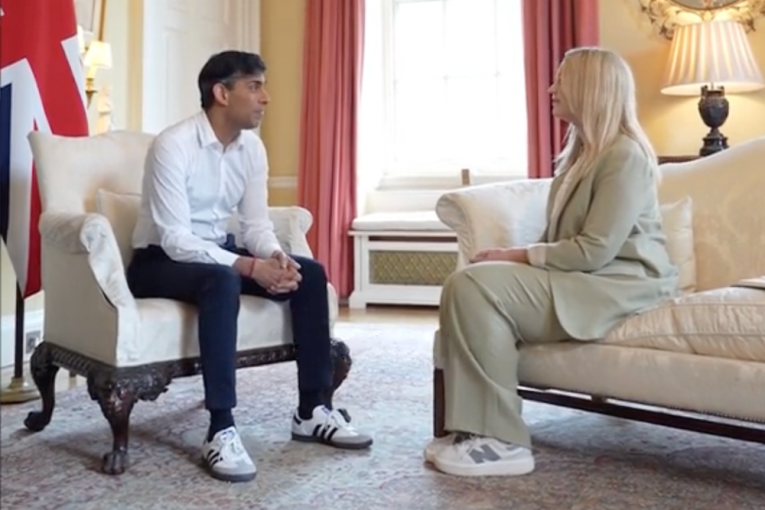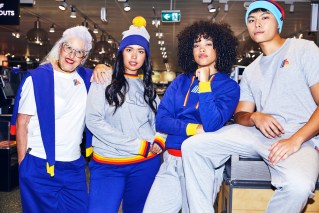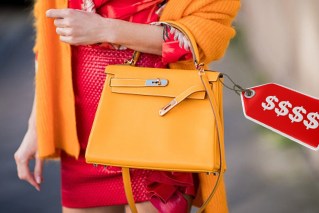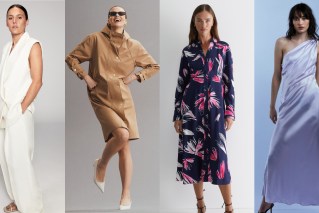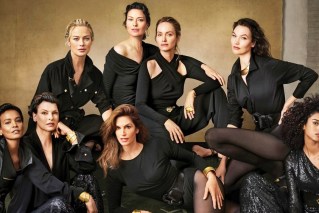Controversial fashion moments


Zara is the latest international fashion retailer to come under fire for a controversial fashion gaff, advertising a black and white striped T-Shirt with a Star of David-like yellow star sewed into the right breast.
The Spanish clothing behemoth has removed the article of clothing after intense social media criticism alerted them to the fact that the new design had an eery resemblance to those worn by victims of the Holocaust.
· Zara abandons maligned ‘concentration camp’ shirt
· Normcore: Why comfortable is cool again
· Wealthy entrepreneurs ridiculed for being out of touch
· The Swedes are here … and retail is changed forever
The fashion industry, both retail and media, has a long history of controversy, sometimes warranted, other-times debatable, here are seven fashion blunders that caused a storm.
Zara concentration camp T-shirt
Who: Zara
When: 2014
What: Zara Kids releases a children’s T-shirt that closely resembles a Jewish ‘uniform’ from a concentration camp. The ‘Sherrif’ shirt was supposed to be for the little gun-slinger but the yellow star, embellished on the on the right-hand side, coupled with the black and white stripes, was just too close for comfort to the horrors of the Holocaust.
Consequence: The extraordinarily ill-thought design has been removed from Zara’s stores, including Israel, and the company is in damage control. “Zara Kids has removed a children’s T-shirt from its stores and website. The T-shirt withdrawn was inspired by the classic American Westerns and has been taken out of circulation due to the potential similarity with the Star of David that has been used as a yellow star patch. Zara has issued a heartfelt apology on its social network profiles, ” a statement said. The T-shirts are due to be destroyed.
Not the greatest design choice… Zara removes striped pyjamas with yellow star http://t.co/3WYKjMQvNb pic.twitter.com/okz24tyf85
— Guardian news (@guardiannews) August 27, 2014
Slave Earrings
Who: Vogue Italia
When: 2011
What: Vogue Italia chose to ignore the usual name for large hoop earrings – hoop earrings – and decided to re-label them ‘slave earrings’. The text accompanying the photo shoot read: ‘If the name brings to the mind the decorative traditions of the women of colour who were brought to the southern United States during the slave trade, the latest interpretation is pure freedom.’
Consequence: Vogue succumbed to wide-scale criticism and replaced the word ‘slave’ with ‘ethnic’.
Impoverished child models
Who: Vogue India
When: 2008
What: The Indian arm of the fashion bible, Vogue, used impoverished Indian children and adults as models for a 2008 shoot. The resulting photos showed the ‘models’ in slums wearing designer gear. A particular standout was a toothless woman holding a baby wearing a $US100 Fendi bib.
Consequence: Despite flack at home and abroad, Indian Vogue editor Priya Tanna told the world to lighten up. But that didn’t stop criticism being heaped on the tacky choice of models from a country plagued by mass poverty.
White angels and black devils
Who: Benetton
When: 1984
What: Long known for using race, religion and sex as a moral and ethical compass in its, at times, shocking and brilliant ad campaigns, the Italian fashion company was accused of going too far when it depicted a cherubic white child next to a black girl with a devilish haircut in an ‘All the Colours of the World” 1984 advertisement.
Consequences: While there was some heated international debate over the black child being made to look like the devil, the biggest response came from then-Apartheid South Africa, where white media refused to use the ads with black and white models – that’s another story in itself though. The fashion house has since gone on to make some of the most memorable fashion campaigns in history.

Sizeism and nerdism are not cool
Who: Abercrombie & Fitch CEO Mike Jeffries
When: 2006
What: In a 2006 interview with news website Salon, the CEO of the preppy American clothing company made some comments he would come to regret. In 2013, his comments about “fat women” and “uncool kids” came back to bite him after they were unearthed by media. Mr Jeffries made the mistake of telling the reporter that he only wanted “good-looking people” entering his stores. “Because good-looking people attract other good-looking people, and we want to market to cool, good-looking people. We don’t market to anyone other than that,” Mr Jeffries said.
Consequence: His resurrected comments sparked protests outside Abercrombie & Fitch stores and widespread boycotting of the brand. It also inspired a viral video in which American author Greg Karber took to the streets in an attempt to “rebrand” A&F by giving their clothes to homeless people. The company was forced to apologise for the comments in a statement to the New York Observer.

Mike Jeffries avoiding the media post the controversy. Photo: Getty
Child sexualisation
Who: French Vogue
When: 2011
What: French Vogue featured French model Thylane Loubry Blondeau in a provocative fashion spread wearing high heels, heavy makeup and revealing clothing. The problem? She was only 10 years old at the time.
Consequence: Many believe this scandal to be the nail in the coffin of ex-editor-in-chief Carine Roitfeld’s career as she left the magazine soon after. Children’s rights activists and parental groups lambasted the spread for being “physically disturbing” and misleading for young women. In response to claims that they were sexualisng their young child, Thylane’s parents made a statement on their Facebook page, using barely readable English, lambasting the US media. “Something going ‘s wrong at the moment with thylane and bad personn in usa about pictures she make’s 8 months ago for vogue ,,thylane doesn’t know about the buzz and i want to protect her from the deapest of my heart ,,, she’s so young ,, so we are going to close this accompte for a while ,,i know all of you are good person who like her so i send you a big kiss,,thanks for all of the above, obviously (sic).”

Anti-semitism
Who: Designer John Galliano
When: 2011
What: The British designer went on an anti-Semitic rant during a drunken fight at a Paris bar. A couple told police that Mr Galliano hurled a racist slur at them and said, “I love Hitler”. Video footage of the incident later emerged.
Consequence: At the time, Mr Galliano was at the helm of French design house Dior, who promptly suspended him and then fired him after the incident hit the media. “The House of Dior confirms, with the greatest firmness, its policy of zero tolerance for any anti-Semitic or racist comments,” CEO Sidney Toledano said in a statement. At first, Mr Galliano denied the remarks but later admitted it in an interview Vanity Fair. “It’s the worst thing I have said in my life, but I didn’t mean it,” Galliano told the magazine. “I have been trying to find out why that anger was directed at this race.”
With Susannah Guthrie


